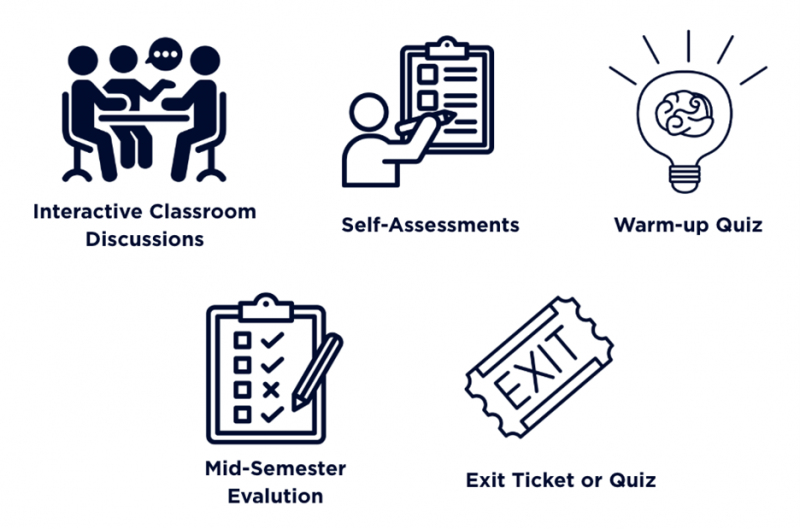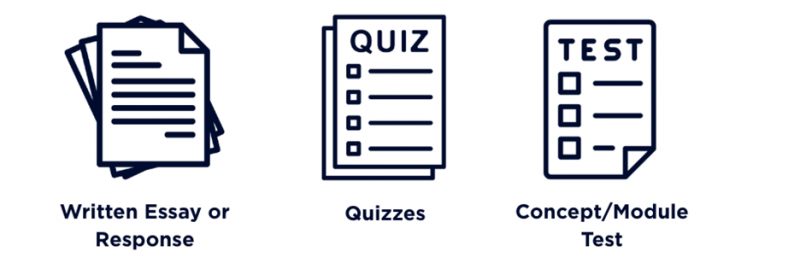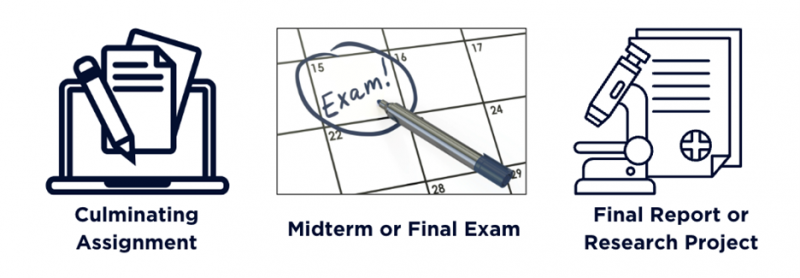Formative assessments
Formative assessments monitor student learning when students are in the process of making sense of new content and applying it to what they already know. They provide immediate feedback to the instructor to gauge student understanding and adapt to the needs of the students. They also help students identify their strengths and weaknesses. Often formative assessments are not graded.

Interim Assessments
Interim assessments may be more formal and can occur throughout the semester. These assessments can be particularly useful in addressing the knowledge gaps in student understanding and can help formulate lesson plans during the course. They may count as a small portion of the course grade. Typically students have the opportunity to revisit and perhaps revise these assessments after they have received feedback.

Summative Assessments
Summative assessments evaluate student learning at the end of an instructional unit by comparing it against some standard or benchmark.
- These assessments are formal and have a direct impact on student grades.
- The feedback to the student may be extremely limited with limited opportunity to re-take the assessment.
- The results of these assessments can help students understand where they stand in the class by comparing grades and, if applicable, by looking at the descriptive statistics such as average, median and standard deviation.

Resources
- Angelo, T. A. & Cross, K. P. (1993). Classroom assessment techniques: A handbook for college teachers (2nd ed.). Jossey-Bass Publishing.
- Daka, H., & Mulenga-Hagane, M., Mukalula-Kalumbi, M., Lisulo, S. (2021). Making summative assessment effective. 5. 224 – 237.
- Earl, L.M., Katz, S. (2006). Rethinking classroom assessment with purpose in mind — Assessment for learning, assessment as learning, assessment of learning. Winnipeg, Manitoba: Crown in Right of Manitoba.
- Galletly, R., Carciofo, R. (2020). Using an online discussion forum in a summative coursework assignment. Journal of Educators Online. Volume 17, Issue 2.
- Khaled, S., El Khatib, S. (2020). Summative assessment in higher education: Feedback for better learning outcomes.
- Andrade, H. L. (2019). A Critical Review of Research on Student Self-Assessment.Frontiers in Education. 4(87).
Quick Links
![]()
Consult with our CETL Professionals
Consultation services are available to all UConn faculty at all campuses at no charge.